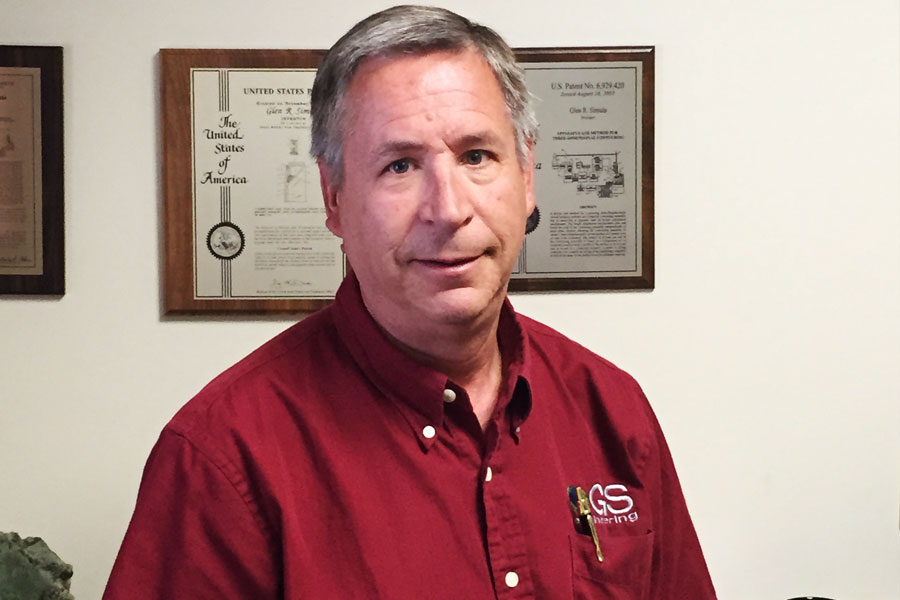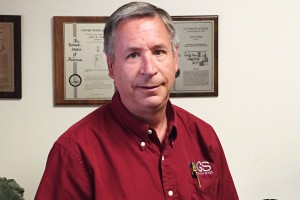
Fueling growth through proprietary products
 Glen Simula launched GS Engineering (GSE) in 2001, after spending 19 years as a researcher at Michigan Technological University. Over the years the Houghton, Michigan-based services company has grown steadily, exceeding $12 million in 2014 revenue with 60 employees. And now, with the addition of proprietary products, GSE has accelerated its growth trajectory.
Glen Simula launched GS Engineering (GSE) in 2001, after spending 19 years as a researcher at Michigan Technological University. Over the years the Houghton, Michigan-based services company has grown steadily, exceeding $12 million in 2014 revenue with 60 employees. And now, with the addition of proprietary products, GSE has accelerated its growth trajectory.
That was then, this is now
GSE initially established a toehold in the competitive engineering services arena by solving complex problems on military vehicles — winning the attention of government contractors and OEM manufacturers for its ability to design lightweight structures and components. With a diverse staff of mechanical engineers, electrical engineers, metallurgists and material scientists, the company provides multidisciplinary muscle that Simula likens to a “rent-an-engineer” concept. “We infuse our expertise where it makes sense for clients, helping them launch new products faster and more cost-effectively by teaming with us instead of relying on their in-house capabilities,” he explains.
GSE has been an avid participant in the federal government’s Small Business Innovation Research (SBIR) program. Since its inception the company has received 14 Phase I awards to conduct feasibility studies on proposed solutions, and 11 of these projects have advanced to Phase II for proof-of-concept prototypes. Even more impressive, GSE has received more than 35 contracts (Phase III transitions) to produce those innovations, an unusually high rate of commercialization. In fact, GSE was among 18 companies in 2013 selected to receive a Tibbett award — the SBIR’s equivalent of an Oscar.
Now GSE is taking its prowess for innovation to the next level by introducing its own branded products. “The SBIR program is a great way to help the government solve problems, and companies benefit by keeping the IP,” Simula says. “Yet in contrast to SBIR work where topics are picked by the government, developing products that we identify a market need for gives us greater control of our destiny.”
Geared for heavy lifting
GSE’s first product, a no-connection forestry winch, aims to make logging more efficient in mountainous areas. The patent-pending device attaches to the processing head of forestry excavators (multifunctional machines that cut down trees, clean off branches and cut wood to specific lengths). GSE’s winch eliminates the need for additional equipment by enabling an operator to pull a log out of a precarious position — without getting out of the cab — and move it to a safe place for processing.
With a maximum force of 15,000 pounds, the winch can also be used to drag logs, pull other vehicles or even made stationary to help maneuver the processor into position. Because it is a standalone attachment, the device can be easily picked up, set aside or shared with other operators.
GSE unveiled the winch last September at an industry show for logging companies in Oshkosh, Wisconsin, and Simula expects it to boost 2015 revenue by 20 percent.
Exceeding the $50 million mark
Simula’s staff is now working on another proprietary product: a robotic agricultural cart. This self-propelled cart will be able to transport corn and other grains from combines without the need for a tractor or driver.
These autonomous grain carts will be sold directly to farmers and through OEM distributors. Once the product is introduced, Simula expects to sell about 100 units per year. At a price tag of $400,000, the cart could boost GSE’s annual revenue well beyond $50 million.
Simula anticipates hiring 15-20 new employees in the next two years to handle assembly work for the winch and grain cart. Cutting and machining of parts will be outsourced, which should create additional indirect jobs. GSE currently subcontracts about $500,000 of work to other companies in the Upper Peninsula. “If we bump that up to $5 million, then our partners will need to hire more workers, and our manufacturing division can have a real positive impact on the region,” Simula observes.
Another new development, GSE recently entered into a joint venture with BridgeGuard, a nearby Upper Pennisula company that designs and sells infrared visual imaging software to locate cracks within concrete bridges. The new entity will be called GS Infrastructure. “This will be our lead into the civil engineering area,” says Simula, who plans to expand the company’s product line beyond bridges to enable inspection of roads, dams, railroad trestles and airplane runways. GS Infrastructure should add another $5 million to GSE annual revenue, Simula says. “It’s another proprietary product for us — the only difference being that it’s software rather than hardware like the winch and ag cart.”
GSE will continue to offer its broad portfolio of engineering services, but Simula believes that the manufacturing side eventually will generate the lion’s share of revenue. “Being a second-stage company has been instrumental in establishing this division,” he says. “In startup, there’s always a cash flow issue, but in Stage 2 you start to have cash that you can set aside and invest into internal R&D, which is key to achieving significant growth.”